Affiliate links on Android Authority may earn us a commission. Learn more.
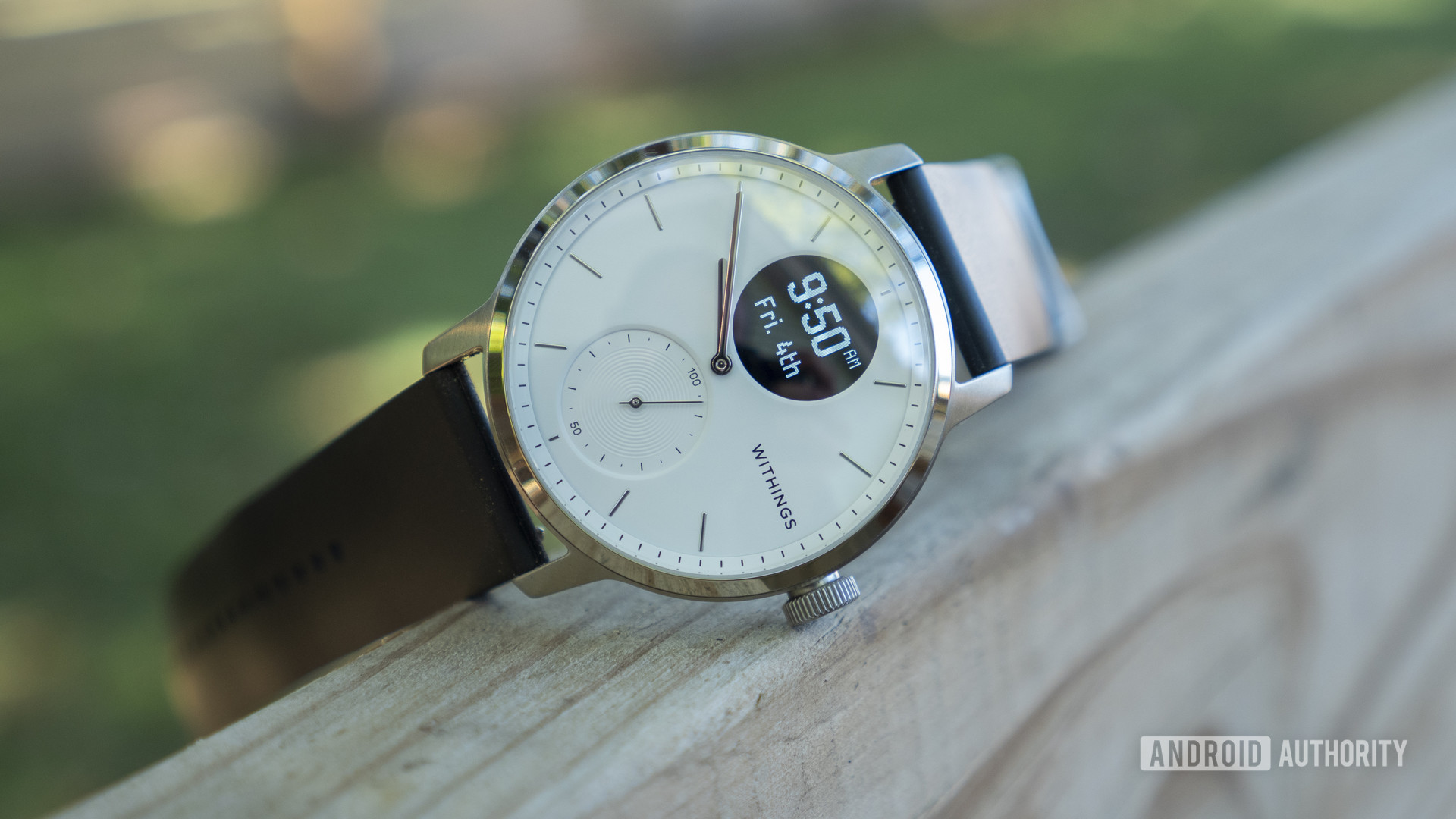


Withings ScanWatch
MSRP:
What we like
What we don't like

Withings ScanWatch
Years ago, we’d be lucky if a smartwatch tracked anything more than basic activity metrics. Lately, though, companies like Apple, Fitbit, Garmin, and Withings have been — at the risk of sounding cliche — pushing the boundaries of what wearable technology can be.
The Withings ScanWatch encapsulates that idea. It offers a medical-grade ECG and pulse oximeter that will help wearers track their daily health stats and notify them of potential sleep apnea and AFib warning signs.
You might be quick to write off the Withings ScanWatch as a “specialty” wearable, but I’d urge you to rethink that notion. It’s one of my favorite wearables in recent years and an important device for those who may suffer from serious conditions. Read our full Withings ScanWatch review to find out why.
Update, February 2023: We have updated our Withings ScanWatch review with details of the latest software update and new features.
Why should you care about the ScanWatch?
Sleep apnea and atrial fibrillation (AFib) affect millions of people each year. These silent killers often go undiagnosed. It has proven difficult to identify symptoms of these issues with mainstream consumer wearables — especially when they aren’t present at the time of a doctor’s visit.
If you’re at all concerned that you’re experiencing breathing disturbances or AFib, the first thing you should do is see a doctor. Then, consider buying a Withings ScanWatch. The ScanWatch is the first-ever hybrid smartwatch to be clinically validated to notify users of signs of AFib and overnight breathing disturbances. It has received CE medical certification in Europe for AFib detection (via ECG and PPG sensors) and SpO2 measurement. CE clearance for sleep apnea detection was expected to pass in 2020, but it looks like that has been delayed. It received FDA approval for sleep apnea detection via ECG in October 2021.
TL;DR, this is far more than your average hybrid smartwatch. It’s a notable step up from Withings’ previous offerings, such as the Steel HR. It adds a medical-grade ECG monitor, pulse oximeter, 24/7 heart rate monitoring, and month-long battery life.
Design: Hard to beat this build quality
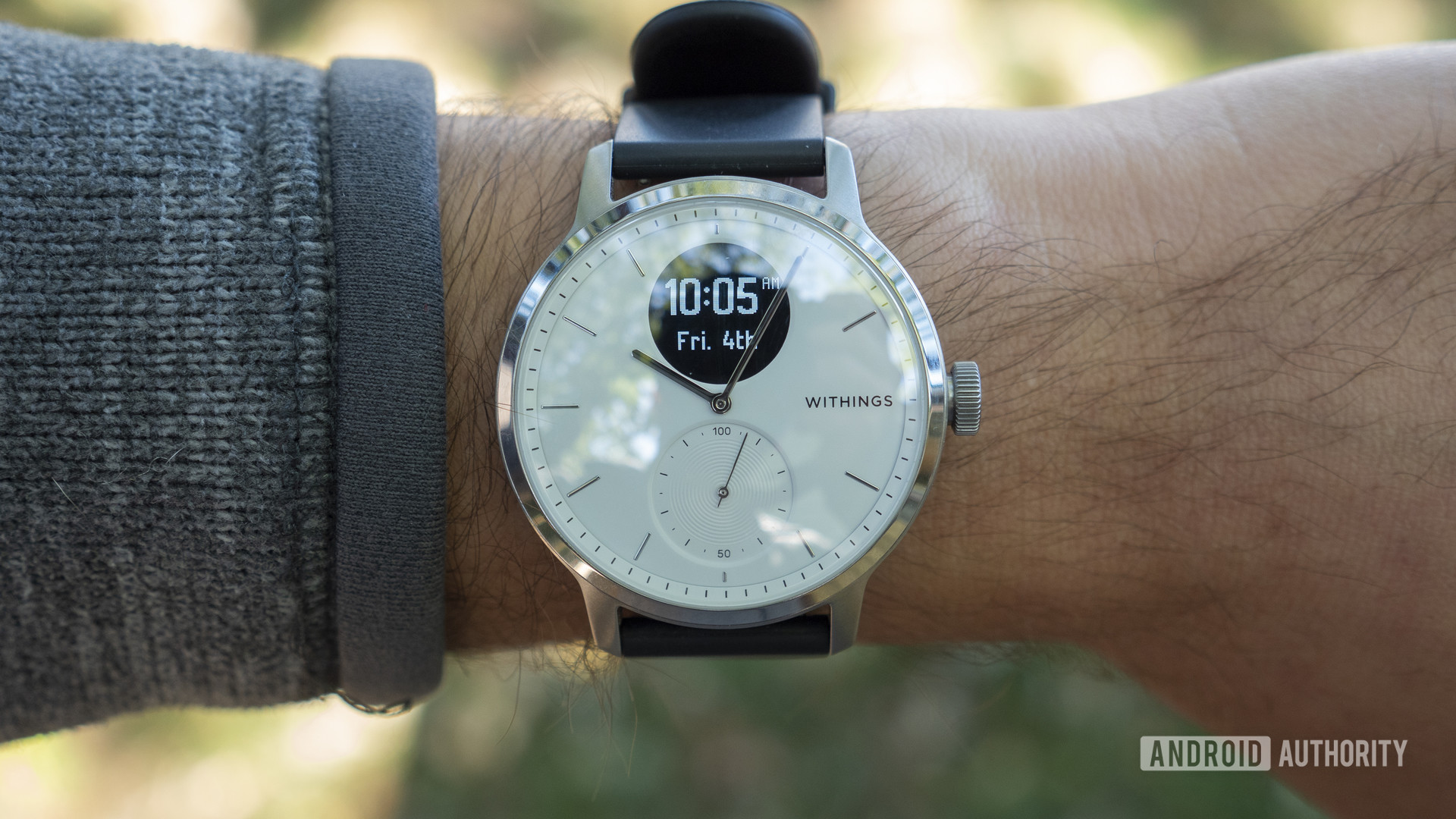
Hybrid smartwatches have the benefit of blending in more than typical smartwatches. If it weren’t for the display occasionally lighting up, most people might think this is a regular analog watch.
The Withings ScanWatch is gorgeous. Everything — the included FKM strap, the stainless steel case, the minimalist design language — looks and feels incredibly premium. It’s the most substantial Withings device I’ve ever used and the most comfortable hybrid smartwatch I can recall.
This is a gorgeous watch.
Withings has done well making some of its previous hybrid watches look nice even though they’re made of cheaper materials. The ScanWatch, though, is made of 316L stainless steel and has a sapphire glass display, which means it’ll be difficult to scratch. Because of these higher-quality materials, I wasn’t as worried about the ScanWatch cracking or scratching while exercising as I have been with previous Withings devices.
It comes in two sizes, 38mm and 42mm. I’m using the 42mm model, which fits my average-sized wrist quite well. It’s much heavier than I was anticipating. The 83g weight was difficult to get used to initially, but now I rarely notice the watch on my wrist.
Compared to other devices like the Steel HR, the ScanWatch has a bigger, brighter PMOLED display. It’s monochrome and fairly low-res, but it’s good enough for simple notifications or checking out real-time ECG readings. I do wish it was a tad brighter; it can be hard to see in direct sunlight.
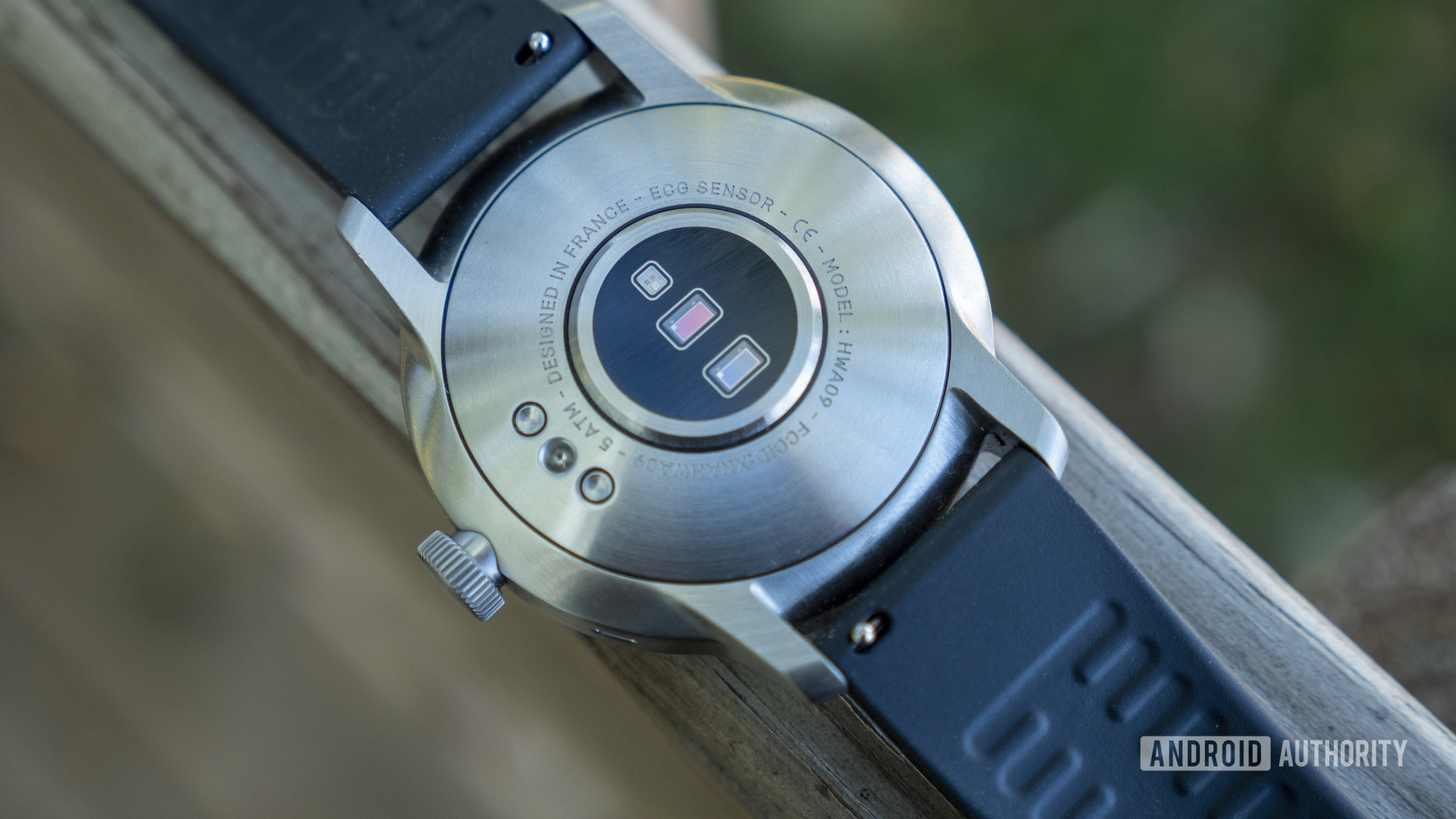
There’s an ambient light sensor on board, and the display features raise-to-wake functionality. I wish I could turn the sensitivity up, though. The display likes to stay off every once in a while if I don’t flick my wrist hard enough during a workout or while I’m at my desk.
The ScanWatch also has a rotatable crown on the right side of the case. It, too, feels nice to use and is a fine stand-in for the lack of a touchscreen display.
Withings advertises 30-day battery life for the ScanWatch. It’s entirely possible to get 30 days out of a single charge, but you’ll need to be careful about which features you’re turning on. I used the ScanWatch with raise-to-wake, and auto-brightness turned on, respiratory scan set to auto, and six tracked exercises, and I had about 11% battery left after 10 days. Granted, this was my first week using the device, so I checked over the settings and fine-tuned the device much more than I normally would. I expect battery life to improve a bit over time. However, that’s still a far cry from the advertised month-long battery life.
Luckily, if the battery hits zero, the power-saving mode kicks in. You can then use your ScanWatch for an additional 20 days. It’ll still keep track of the time, as well as your steps and sleep.
Withings ScanWatch review: Health and fitness tracking
I asked Withings to comment on the ScanWatch’s ECG accuracy compared to traditional ECG monitors. Matthieu Menanteau, Product Manager at Withings, explained:
Like Move ECG, ScanWatch has been clinically-validated for its AFib detection. We conducted our validation study at Centre Cardiologique du Nord and Hôpital Européen Georges-Pompidou where ScanWatch was compared to the industry gold standard, a 12-lead ECG. Results were read blindly by three independent cardiologists to compare the accuracy with the gold standard. The study confirmed ScanWatch’s accuracy, compared to industry standards, and the device has received CE marking for medical devices.
One of the ScanWatch’s headline features is its built-in medical-grade electrocardiogram (ECG) monitor. If you read my Withings Move ECG review, it’s a similar setup. Scroll through the watch’s interface until you find the ECG icon, then press in on the crown. Place your finger on the watch bezel (one of three electrodes in the ScanWatch) and remain still for 30 seconds. You’ll see your recording scroll past on the watch’s display. You can also see your recording scroll in real-time if the Health Mate app is open on your phone. It’s a lot of fun to watch.
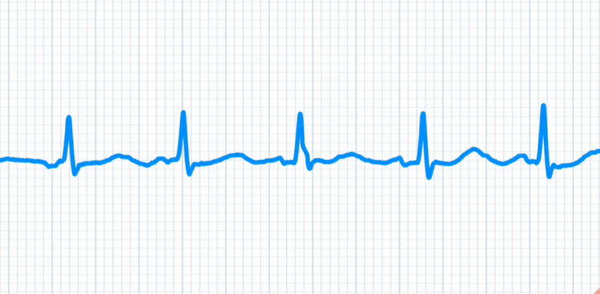
Your ECG results are sent to your phone immediately. Tap on the ECG measurement, and you can replay the recording if you need to focus on any particular area. In my case, I was given the message, “This recording doesn’t show signs of atrial fibrillation.” (What a relief.)
Your heart rate needs to be above a certain threshold for your ECG recording to stick. My resting heart rate is usually between 49-52bpm, but it needs to consistently be above 50bpm to record properly. Luckily the ScanWatch will notify you if your heart rate regularly seems too high or too low, as it could indicate warning signs of bradycardia or tachycardia. Even with a lower-than-normal resting heart rate, I never once received one of these notifications.
Here’s the best part. After you record your ECG, you can quickly share a PDF of your recording or a complete health report with your doctor. It takes about two seconds to generate a report, and you can email it, share it, or download it to your phone. It couldn’t be any easier.
Keep in mind the ScanWatch can detect signs of AFib, but not any other arrhythmias. Firmware update 2651 in November 2022 brought automatic resting heart rate alerts that ping users if their heartrate is lower or higher than usual.
Read more: What is ECG, and why does it matter?
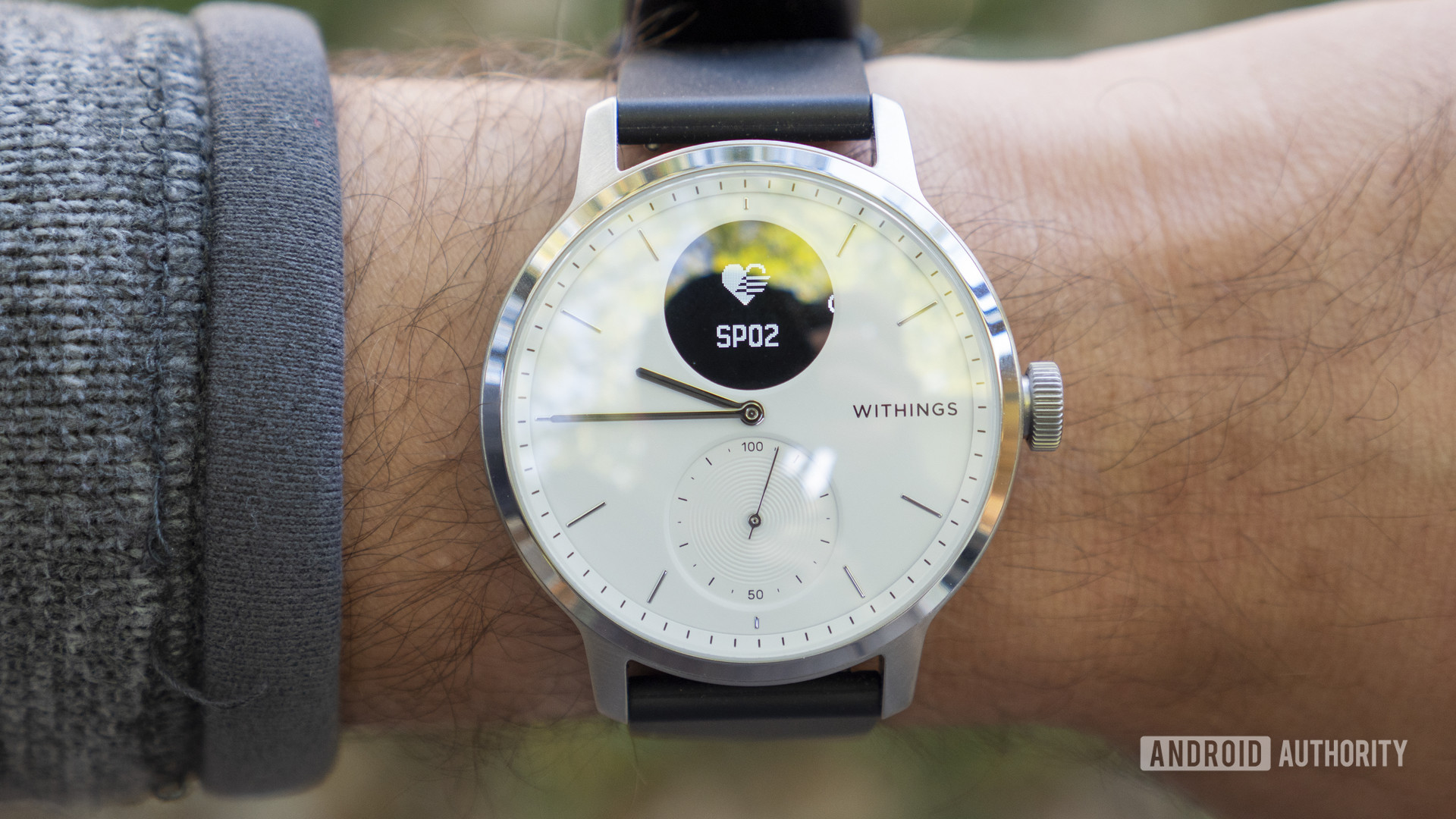
The ScanWatch also comes with a medical-grade pulse oximeter to measure oxygen saturation levels (SpO2). Many other wearables on the market now feature SpO2 sensors, but it’s nice to see Withings include one on the ScanWatch. Normal SpO2 readings fall between 90-100%. Mine comes in anywhere from 96-98%. You take an SpO2 reading the same way you take an ECG reading. Find the SpO2 icon on the watch, select it, and hold your finger on the bezel for 30 seconds while staying still.
That’s just for on-demand readings. The ScanWatch also uses the pulse oximeter for detecting breathing disturbances while you sleep. And, as of December 2020, the ScanWatch can also automatically track your blood oxygen levels while you sleep. Withings calls its breathing disturbances feature a “Respiratory Scan.” A Respiratory Scan monitors your oxygen saturation overnight to detect warning signs of apneic episodes (sleep apnea). You can set it to record in three modes. Always-on mode performs a Respiratory Scan every night and greatly reduces the ScanWatch’s battery. Auto mode (recommended by Withings) scans three nights in a row at the beginning of every calendar quarter and notifies you a day before in case you want to reschedule. You can also turn SpO2 monitoring off.
CE (and eventually FDA) approval for breathing disturbances is a big deal.
The Respiratory Scan measures your heart rate, heart rate variability, respiratory rate, and oxygen saturation levels. This combination supposedly gives you an accurate overview of how many breathing disturbances you experienced overnight. I have always fallen in the “few” category, but Health Mate gives you details on what to do if you experience more breathing disturbances than normal. 0-30 disturbances fall in the “few” category, 30-60 are rated “moderate,” and 60-100 are rated “high.” You can also take in-app tests (Epworth and STOP-Bang) if you’d like to do some investigating into your daytime sleepiness.
In December 2020, Withings rolled out an update to the ScanWatch that brought a detailed breathing disturbances graph to the Health Mate app.
For some people, the importance of having access to a device that could potentially warn you of sleep apnea symptoms cannot be overstated. Sleep apnea detection isn’t currently available in many consumer-grade wearables. As of November 2021, the ScanWatch is still waiting to be CE-certified for sleep apnea detection.
On top of sleep apnea detection, the ScanWatch will record your sleep duration, depth, regularity, and interruptions overnight. It combines all of these metrics to create a sleep score from 1-100. Withings’ sleep scores have been spot-on for me, and numbers appear to line up with my other favorite sleep tracker, the Fitbit Charge 4. And while the ScanWatch will give you deep and light sleep analysis, it omits REM sleep. Withings says its wearables aren’t able to track that metric at this time. An odd omission, to be sure, since this is the same company that makes high-end sleep tracking mats.
The Withings ScanWatch is also a fitness tracker. It can track over 30 sport profiles and supports auto-tracking for walking, running, swimming, and biking. Daily stats can be found in the Health Mate app. You can see your steps taken, distance traveled, calories burned, and floors climbed thanks to the altimeter.
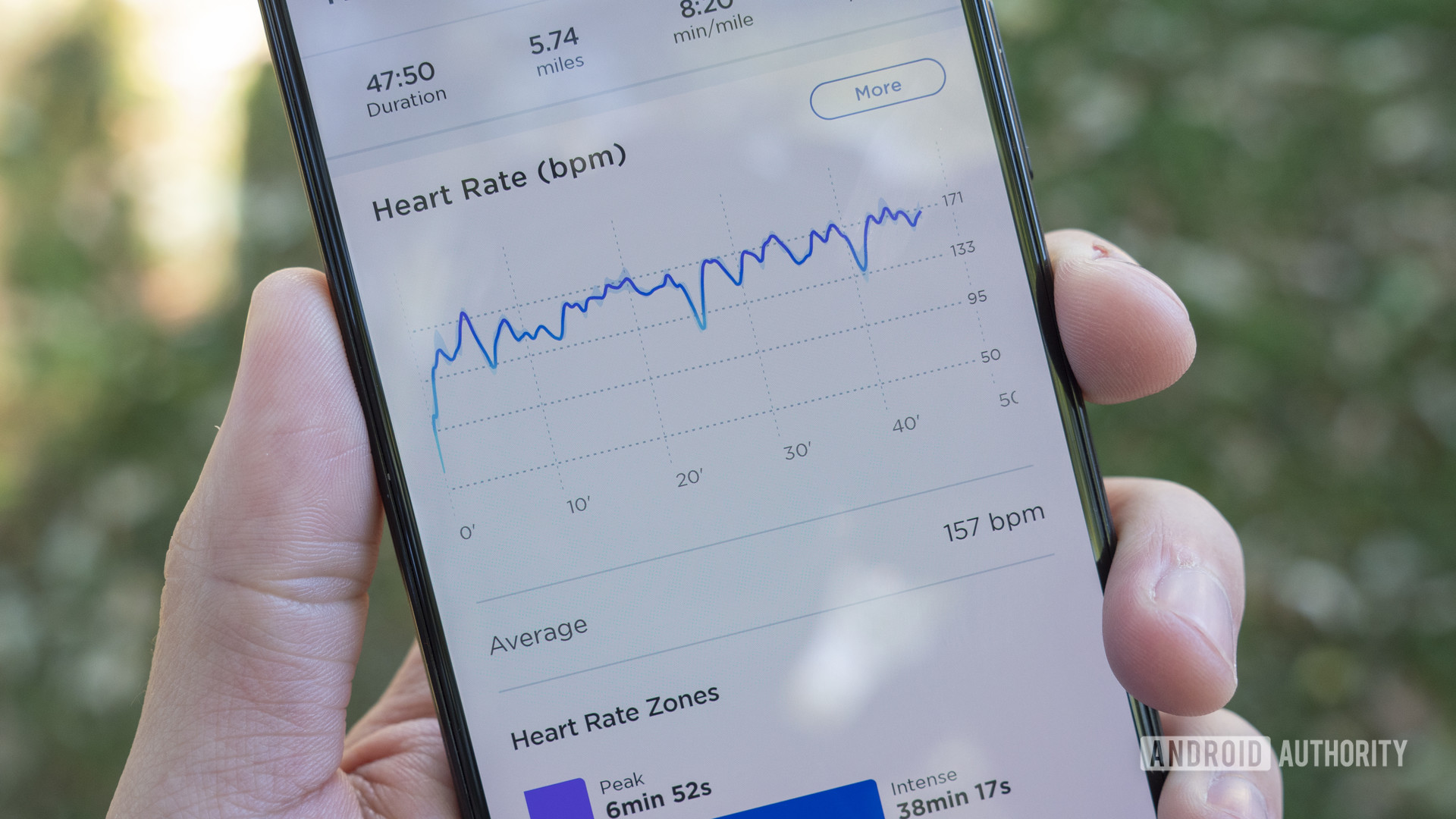
There’s an optical heart rate sensor on board that offers continuous tracking throughout the day. It records every 30 minutes. Health Mate does a good job at not only displaying your daily heart rate but any time it recorded a lower- or higher-than-average number.
I tested the ScanWatch’s heart rate sensor against the Garmin Fenix 6 Pro and Wahoo Tickr X chest strap during a 5.3-mile run. See the screenshots below.
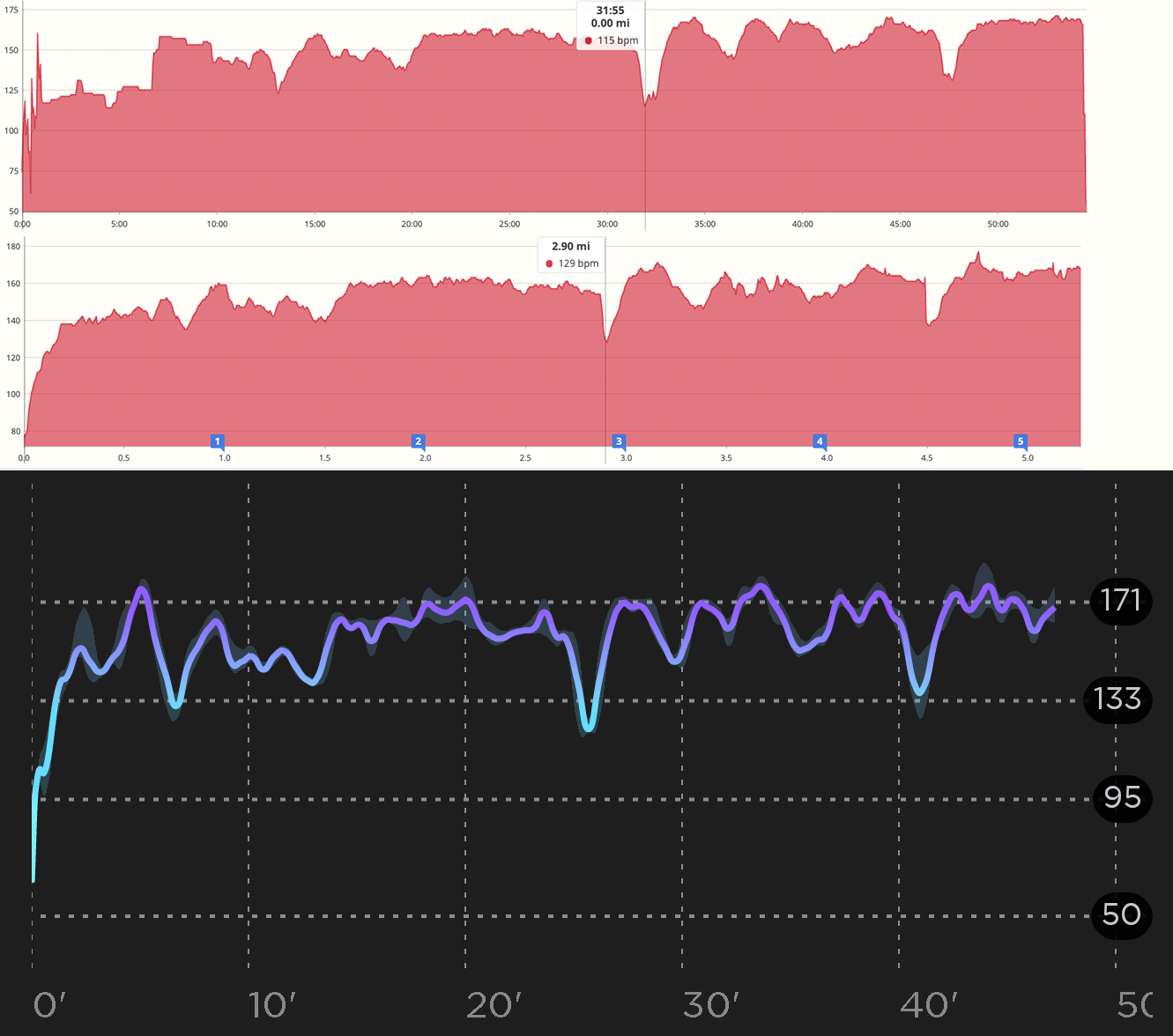
Overall averages lined up nicely between the three devices. The Tickr X recorded an average of 151bpm, the Fenix 6 Pro’s average was 154bpm, and the ScanWatch’s was 157bpm.
The ScanWatch’s higher numbers are reflected on most points of comparison throughout the workout. I stopped at a traffic light at the ~31-minute mark, as you can see in the first big dip in all three screenshots. The Tickr X recorded a lower heart rate of 115bpm at this time, the ScanWatch recorded 122bpm, and the Fenix 6 Pro recorded a much higher 129bpm.
The ScanWatch over-reported a few numbers compared to the Tickr X towards the beginning of the workout, but by the 10-minute mark, things seemed to have leveled out.
After this workout and a few others over the past week, it’s clear that the ScanWatch’s heart rate sensor has been able to keep up with the bigger players. The accuracy will likely be good enough for most people. Health Mate can also send data to Google Fit, Strava, RunKeeper, and more if you’re already invested in another fitness platform.
Oh, and the ScanWatch can’t connect to external heart rate sensors, so you need to track with the built-in one if you go for an exercise.
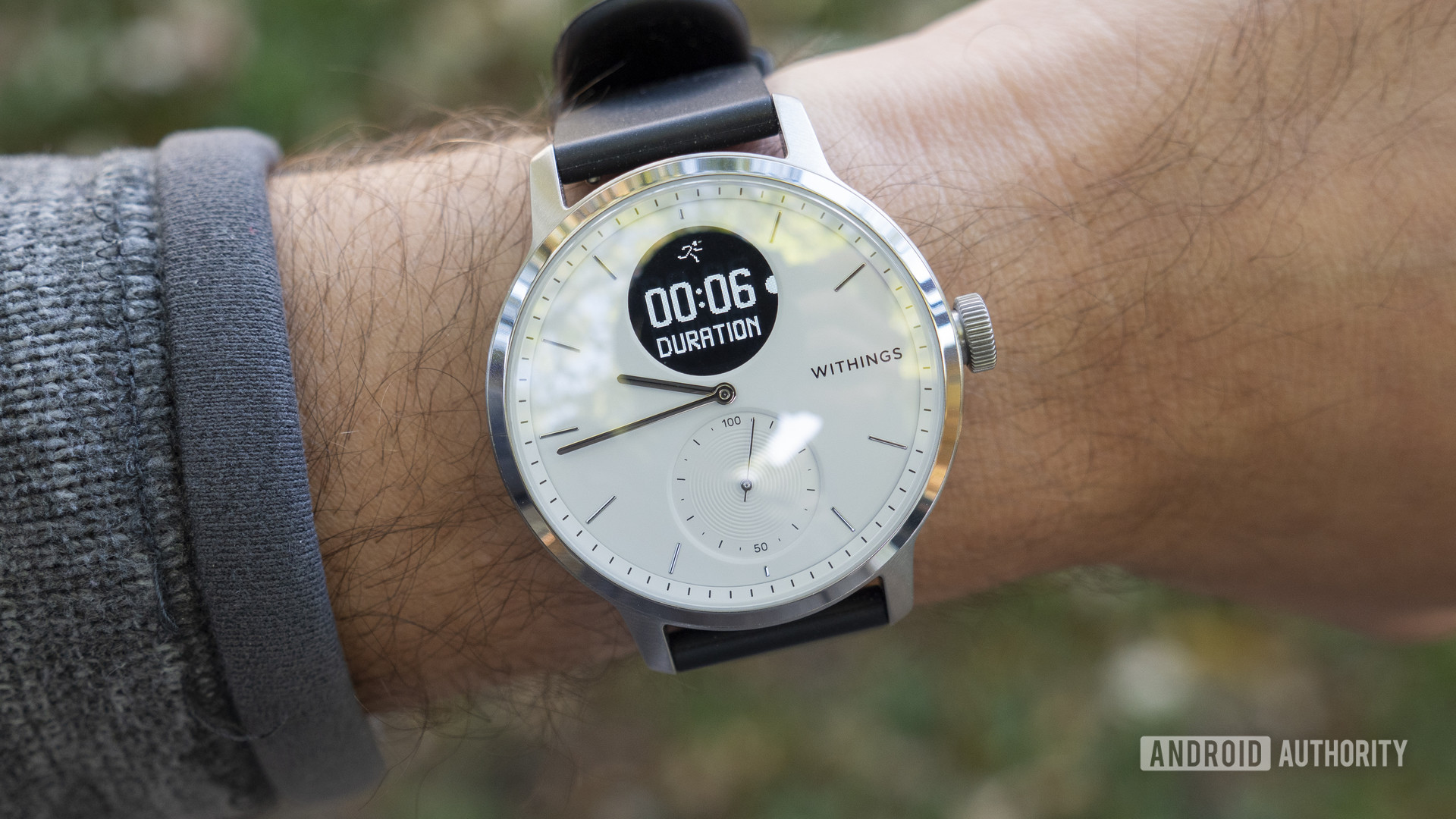
The ScanWatch’s heart rate sensor may be accurate, but runners might want to look elsewhere. There isn’t much post-run analysis in the Health Mate app. You get duration, distance, pace, kcals, and heart rate zones, but not much else. You’ll also get a map of your workout and splits if you enable connected GPS.
Withings also assesses your fitness level via VO2 max estimations in the Health Mate app. You’ll only get a score (from 17-60) if you regularly use connected GPS for your runs.
Tracking health trends couldn’t get any better with Health Mate. The app does a great job of displaying your daily activity and sleep progress over time. Withings also integrated a fun little chatbot into the app that gives you more tips and tricks if you need them and stops bugging you if you don’t. The health insights it suggests are useful, too.
On October 28, 2020, the Withings ScanWatch received an update to version 1601. The ScanWatch now has a Breathe mode, which lets you focus on your breathing for one minute. You need to enable it in the device settings screen. Once that’s done, select Breathe mode on the watch, choose how many breaths you’d like to take during your minute-long session, and the ScanWatch will guide you through the process.
Two other smaller features were added with this update. Now, you can long-press the physical button to launch a shortcut. Currently, it’s limited to three apps: workout, ECG, and oxygen saturation.
There’s also a new Strava data screen on the ScanWatch. Once you add it from the “customize screens” option in the settings menu, the data screen will show your weekly distance recorded from Strava.
Smartwatch features: Held back by hardware
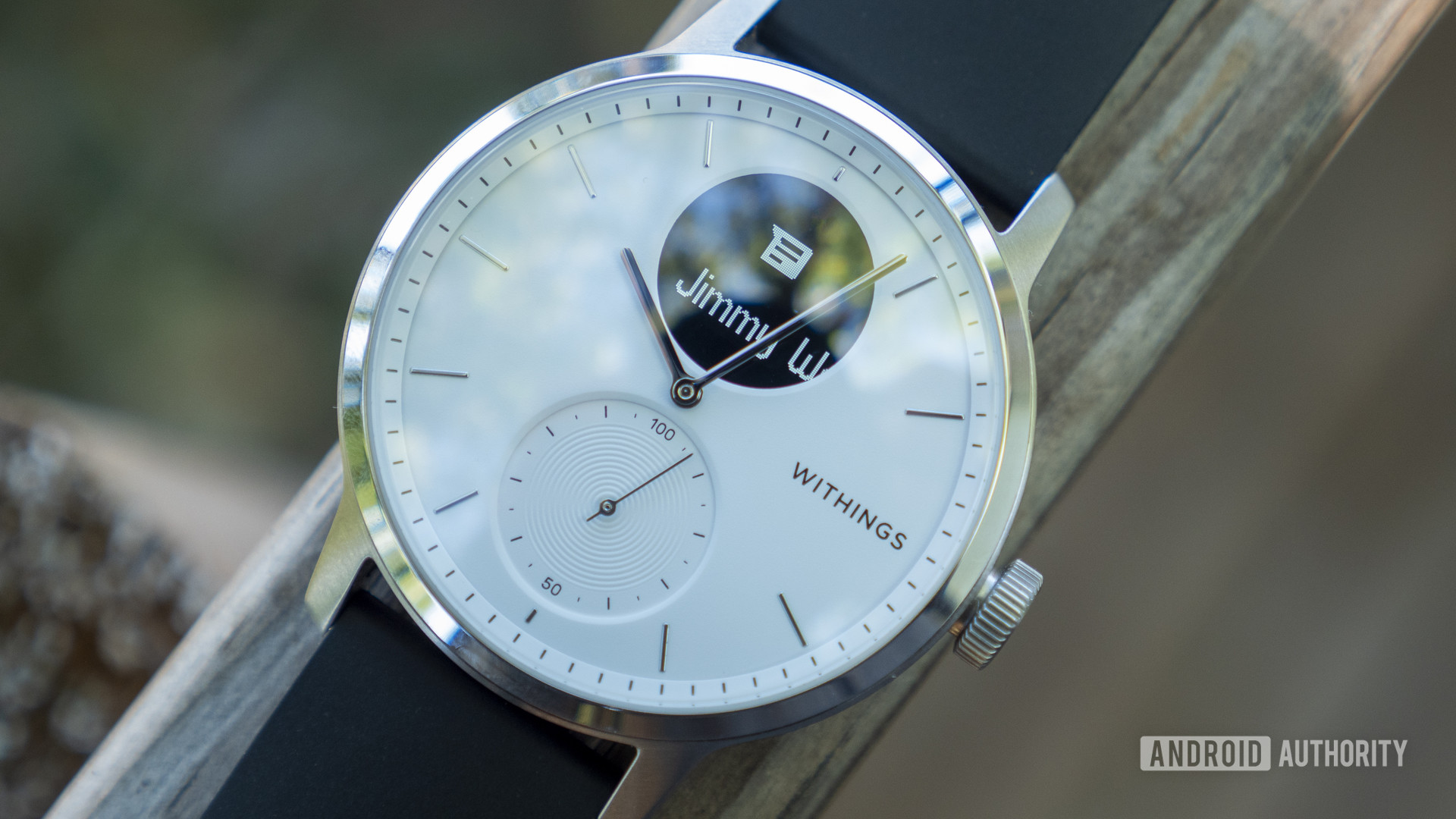
Every hybrid smartwatch does things a bit differently. Withings employs a small PMOLED display on its ScanWatch to show notifications, software menus, and health stats. The small display is fine for most use cases. You don’t really need anything huge for scrolling through menus.
Problems arise when notifications start rolling in. There’s no good way to display messaging threads or emails with longer subject lines on a display this small. Notifications scroll pretty slowly from right to left across the display. If the message is longer than a couple dozen characters, you’ll be sitting there with your wrist held up way longer than you’d like. Numerous times, I ended up putting the watch down and checking my phone because the message I was trying to read was too long. This setup might be fine for some people, but it can get frustrating when you’re hoping to check your notifications quickly and conveniently.
I’m a big fan of Garmin’s vivomove hybrid watches. The higher-end models feature hideaway displays that only appear when there’s something to display. I also really like Fossil’s e-ink display implementation on the Hybrid HR. Maybe it’s time for Withings to move past the small circular display.
The ScanWatch is pretty basic in terms of other smartwatch features. There’s a smart wake-up feature built into the silent alarm that will attempt to wake you up at the optimal time in your sleep cycle. My alarm is set for 6:30 a.m., and the ScanWatch usually starts buzzing for me at 6:09 when I’m in the light sleep stage.
Overall, the ScanWatch provides about as many smart features as other hybrids. If you need something with contactless payment support, smart home controls, or onboard music storage, you should look for a full-fledged smartwatch.
Withings ScanWatch specs
| Withings ScanWatch | |
|---|---|
Display | 13.8mm PMOLED Physical hour and minute hands Daily activity subdial |
Materials | Watch face: Sapphire glass Case: Stainless steel Band: Silicone (38mm) or FKM (42mm) |
Dimensions and weight | 38mm: - 38.4 x 13.2mm - 18mm watch strap, fits wrists from 146-211mm - 58g 42mm: - 42 x 13.7mm - 20mm watch strap, fits wrists from 163-239mm - 83g |
IP rating | 5ATM |
Battery | Up to 30 days (advertised) Charging: ~2 hours to 100%, ~1 hour to 80% |
Sensors | Optical heart rate / SpO2 sensor Electrocardiogram (ECG) sensor Altimeter Connected GPS |
Storage and memory | Free, unlimited online data storage with a Withings account 5 days of local storage of data between syncs |
Connectivity | Bluetooth LE |
Compatibility | Android 8 or later iOS 12 or later |
Withings ScanWatch review: Price and competition
Despite Withings previously announcing a lower price, the ScanWatch is now available in the US for $275.95 (38mm) and $299.95 (42mm), and across Europe for €279/£249.99 (38mm) and €299/£279.99 (42mm) at Withings.com, Amazon, and other select retailers.


Few other wearables match the ScanWatch’s feature set. In the hybrid watch world, you can’t beat the ScanWatch. It’s by far the most medically advanced hybrid watch you can buy. The Garmin vivomove Sport ($179 at Amazon) is the next best hybrid. It’s a better fitness watch, and it has a better display. It really can’t hold a candle to the ScanWatch’s health monitoring features, though.
Apple is steadily improving the health features of its smartwatches. The Series 8 ($329 at Amazon) comes with an ECG monitor, menstruation tracking, fall detection, and more. Again, the ScanWatch is the more health-focused device, though the Apple Watch is the better pick if you’re looking for fitness or smart features.
For those on Android, a comparable Wear OS equivalent is the Samsung Galaxy Watch 5 series ($162.57 at Amazon), bringing larger batteries, hardier builds, and a skin temperature sensor to the table.
You’ll also want to check out the Fitbit Sense ($168 at Amazon) and Versa 3 ($158 at Amazon). The Sense boasts an ECG monitor, a skin temperature sensor for warning signs of illness, and an EDA sensor for tracking stress via electrodermal activity.
Finally, Withings now offers a pricier version of the ScanWatch targeted at luxury-seeking divers. The ScanWatch Horizon ($499.95 at Withings) seemingly packs all the features offered by the original ScanWatch, but in a much more rugged, weighty shell. If general health monitoring is still your end goal, forking out $500 for a Withings ScanWatch Horizon would be ill-advised.
Withings ScanWatch review: The verdict
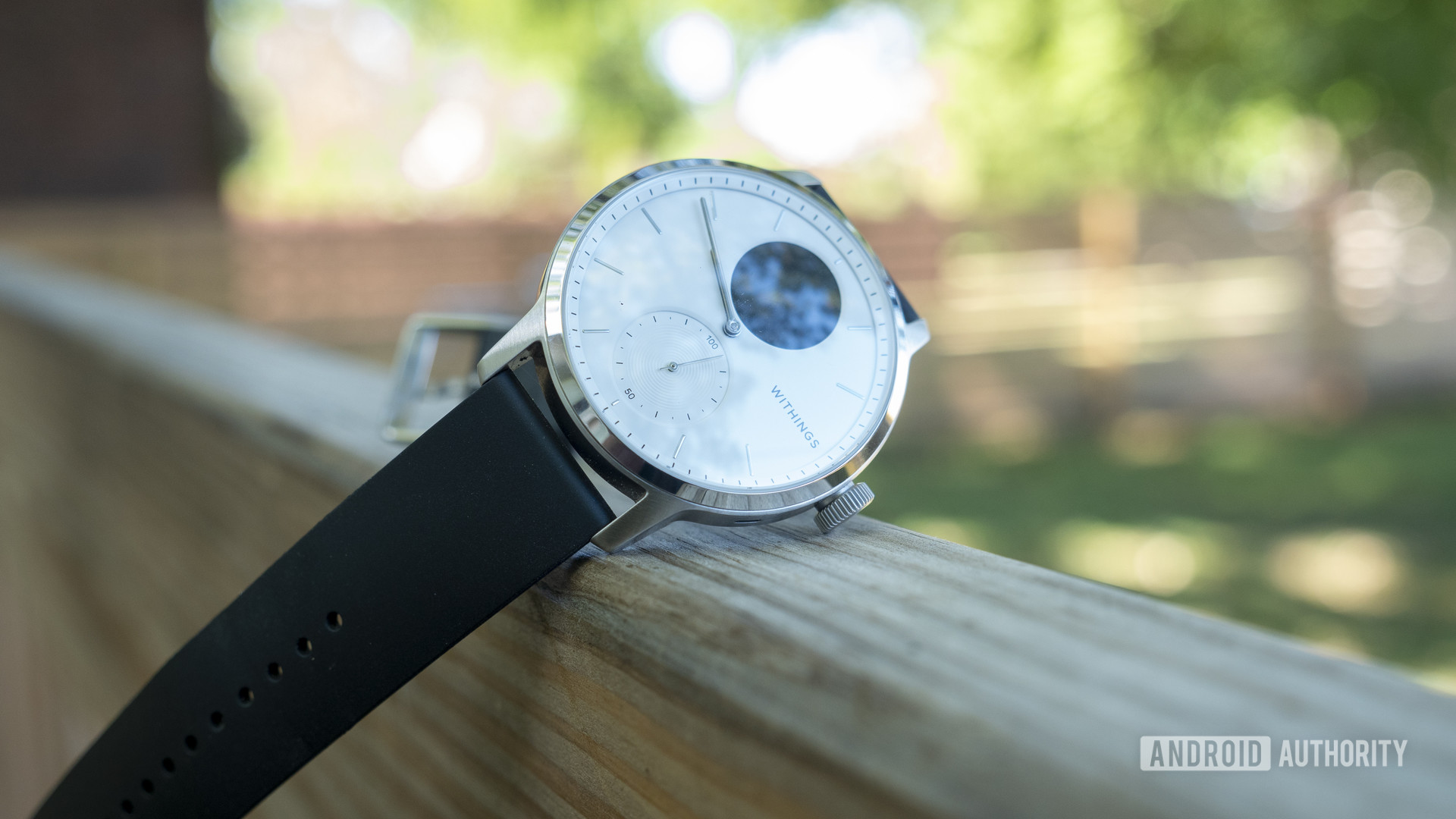
The Withings ScanWatch is one of the most sensible wearables you can buy to keep track of your health. It’s the best Withings has to offer, and it’s one of my favorite fitness trackers I’ve ever used. Not to mention, the ability to take on-demand ECGs seems invaluable for those who suffer from heart conditions.
The Withings ScanWatch is one of the most sensible wearables you can buy.
Sure, there are things I’d change about it. I don’t love the small display, and I wish it offered more advanced fitness features. But the positives vastly outweigh the negatives here. If you need to keep an eye on your heart health or overnight breathing, I don’t see why you shouldn’t pick up a ScanWatch.
Top Withings ScanWatch questions and answers
Absolutely. Few smartwatches or hybrid watches come packing clinically approved ECG and PPG sensors. If monitoring your health is important to you, the ScanWatch is an excellent option.
Yes, the Withings ScanWatch has an ECG sensor. It’s one of the device’s headline features.
No, the ScanWatch lacks built-in GPS. It does have connected GPS support, but you’ll need to take your phone along on runs if you want that benefit.